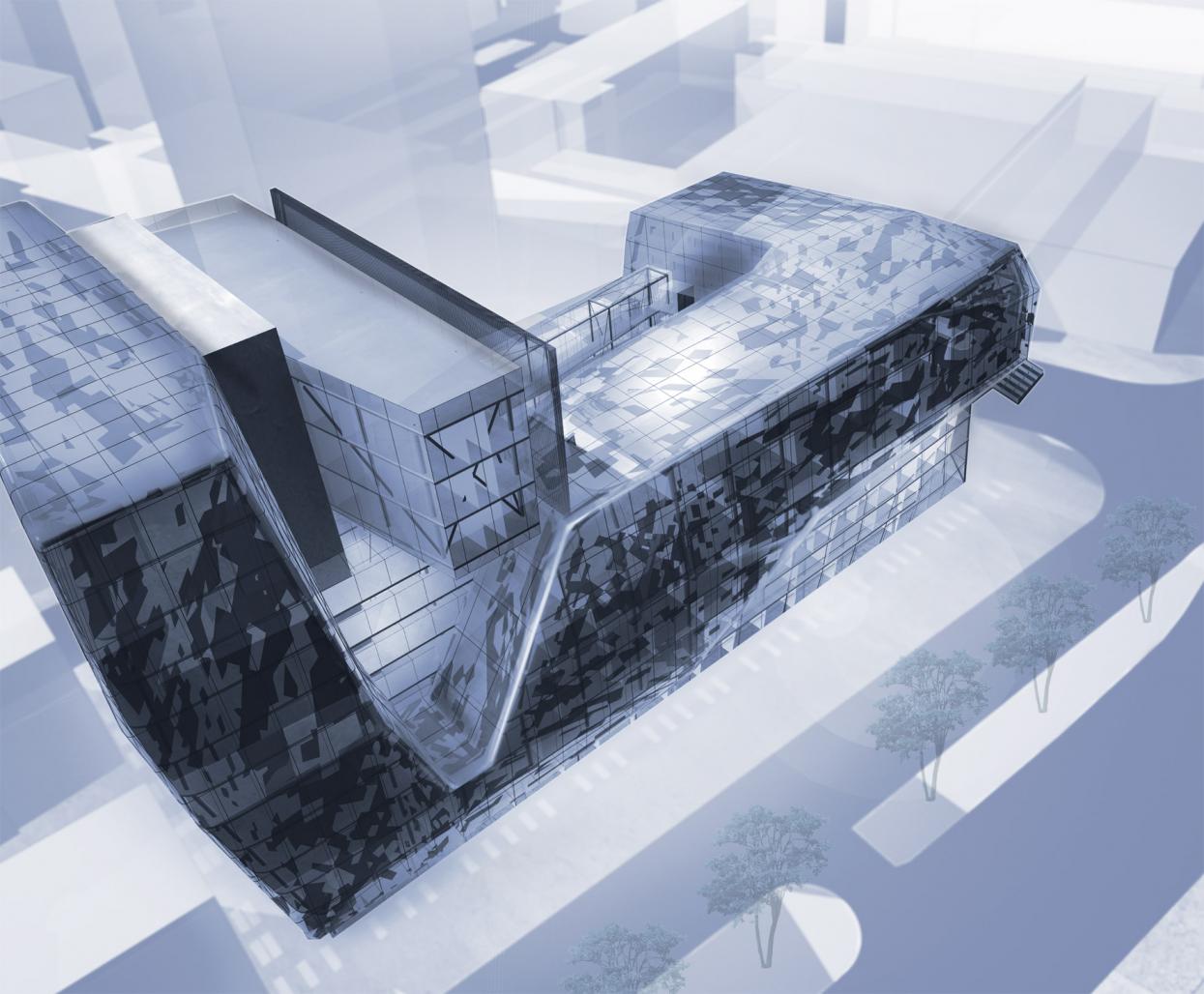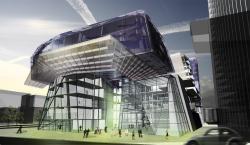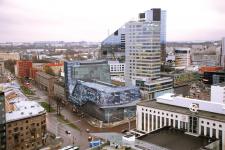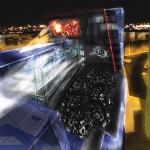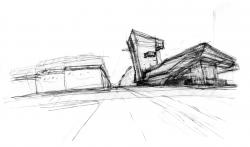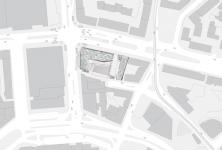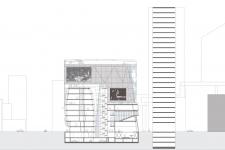The design for the Estonian Academy of Arts is a confident urban contribution, adding numerous values to the business orientated surrounding space by transporting and emphasizing the importance of art into society.
The high density of the business district gets transformed into one dense entire structure – a building being an independent part of the city itself - but communicating with the city in different ways on several levels.
The design refers to the urban guidelines within the floor plan and in the differentiation of the building heights.
Moreover, most parts of the ground floor are open to the public, pavements are traversing the site and therefore integrating external spaces into the building.
The public space in front of the “entrance crystal” and under the big cantilevered roof, serves as an entrance plaza for the New Estonian Academy of Arts. A significant porch, marks the main entrance of the building.
The ground floor accommodates the foyer, a multifunctional theatre, the „Open Academy,“ a shop, a café and two gallery spaces.
The organisation of the entire building aims at a diversity and overlapping of different functions and activities and blurs the boundary between private and public.
This campus consists of two main volumes, interacting with each other and melting together into a new typology.
The organic body - morphing from horizontal to vertical orientation - and the shaped bloc, is connected by a „Ramptower.“
The facade pattern is developed from a random graphic-geometric visualisation error by a computer.
A circulation system using walkways, stairs and ramps links all parts of the building and refers to space as continuity and serves as communication and exhibition space as well.
The “heart” of this system is the “ramp tower,” based on the philosophic idea of the Peripatos – the philosophic school of Aristoteles – in which the students and the professors should “walk around” to gain insights.
2007
2008
Lukas Goebl, Oliver Ulrich & Boris Steiner
